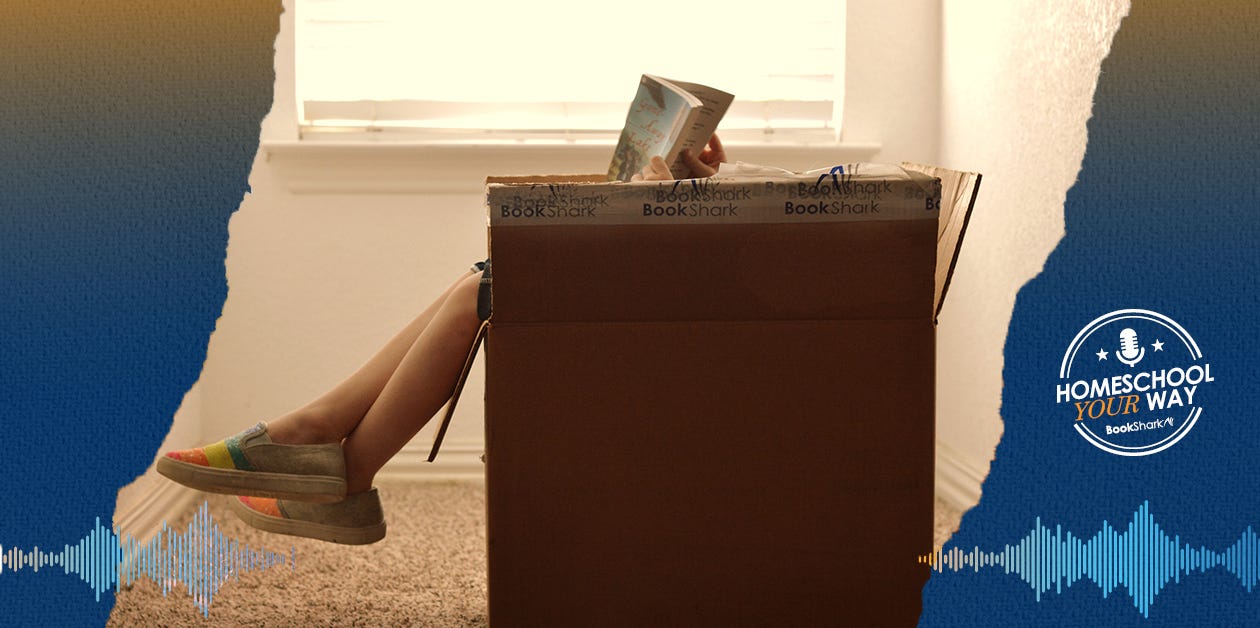Narrowing Your Homeschool Focus
-
 By
BookShark Homeschool Curriculum
By
BookShark Homeschool Curriculum
- Jul 21, 2015

Realizing that I can focus on only a few things well as a teacher, I chose to narrow my yearly homeschool focus to one or two overarching goals each year. Focusing our homeschool this way has freed me to concentrate on what I know my children need to learn academically and personally to move onto the next phase in their education. It also helps me relax into the curriculum I've chosen and not worry about gaps in learning or keeping up with state standards.
1. Habit Training (Pre-K through 2nd Grade)
While habit training is usually mentioned by home educators who take a Charlotte Mason approach, I find that it is useful for all home educators. Focusing on habit training in the early years of homeschooling makes things much easier for both parents and children as time passes.
Teaching children habits of chore-keeping makes home upkeep much easier since homeschooling notoriously takes a toll on the home. Teaching children habits of focused attention on school work makes the day go faster and with lessens complaining. (I start with 20 minute time periods and slowly increase over the years.)
Teaching children habits of respect for you as both teacher and parent makes poor behavior easier to correct. Begin early so that by the time your children are spending longer each day to homeschool, these habits are a normal part of the routine.
2. Foundational Subjects (Pre-K through 2nd Grade)
When I first started homeschooling, I asked my father, who has been involved in public education for over 40 years as a teacher and a principal what one thing he would do to change the current school system. He told me that he would spend kindergarten through second grade having the teachers teach nothing but math, reading, and handwriting.
His reasoning was that if children get a solid foundation in those three things, then the other subjects that need to be taught as they get older will not be a problem. I took his advice to heart and have spent the early years of my kids’ education focused on these foundational subjects. It doesn’t mean that I don’t throw in other fun things to study like science, geography, or art, but I keep my focus on those core subjects.
3. Following Interests (3rd Grade through 8th Grade)
Once children are reading well, it’s fun to sit back and watch them dive into their interests. It’s even better if you can bring these passions into your homeschool.
My oldest has been in ballet since she was four; it is her passion. So when she was in third grade I started gathering ballet books for her to read—both fiction and non-fiction. We watched ballet documentaries and movies. We found France and Russia on world maps and talked about the different contributions those countries made to ballet. In other words, I used her passion to let her learn.
This is a great way for people of all ages to learn, but it’s especially enjoyable when they are in upper elementary and middle school before high school requirements make school less flexible.
4. Building on the Foundation (3rd Grade through High School)
 The initial foundation of the 3 R’s has been laid, so for the rest of their time at home, you can focus on expanding those basic concepts. Math begins to go deeper and deeper as you progress from multiplication and division through advanced math concepts. Math can also expand into music, logic, and the math-based sciences.
The initial foundation of the 3 R’s has been laid, so for the rest of their time at home, you can focus on expanding those basic concepts. Math begins to go deeper and deeper as you progress from multiplication and division through advanced math concepts. Math can also expand into music, logic, and the math-based sciences.
Reading moves into a study of literature plus using reading to learn and gain new information about history, geography, science, art, and various other studies. Handwriting gives way to studying spelling, grammar, and writing so that students can make their viewpoint understood to a reader. Even at the higher grades, the focus should still be on the two basic disciplines of math and language arts.
5. Independent Learning (5th Grade through High School)
An important part of home education is teaching children how to learn for themselves. A home environment is the perfect place to do that. We can slowly lead our children to independence by first assigning them a couple of subjects to do on their own and moving them to being completely responsible for all of their assignments by high school. Teaching them how to schedule their daily and weekly work is also a focus during this time.
These are skills that aren’t necessarily found on a lesson plan, but are extremely important for kids to learn. However, don’t be completely hands off. Some of my daughter’s favorite learning times are when we discuss things she has read and studied on her own. Plus it helps me see if she has really understood the material.
6. Future Goals (High School)
High school is definitely the time to focus on the future goals of your students to prepare them for college, trade school, or an apprenticeship. You can even use extra-curricular activities, jobs, or volunteer work to help high school students find a career path or to give authentic, hands-on experience in a field in which they are interested.
As home educators we have a lot of freedom in giving our high school students a smorgasbord of opportunity and educational avenues which other school systems do not.
Hopefully this simplified change in focus will be as beneficial to you as it has been to me. With just one or two primary goals for each stage, I can zero in on the the most important things as we work daily through our homeschool curriculum.









